Everything from teddy bears to that YouTube video of a Russian couple having lunch with a bear has convinced some of us that bears can make excellent pets. After all, these beasts may be big, but they’re also fluffy, adorable, and friendly—traits we all look for in our animal companions!
Sadly, as gentle and cute as some bears are, they’re also extremely capable of tearing you limb from limb and making a feast out of your entrails. So no, bears don’t make good pets.
Read on to find out why bears make terrible pets!
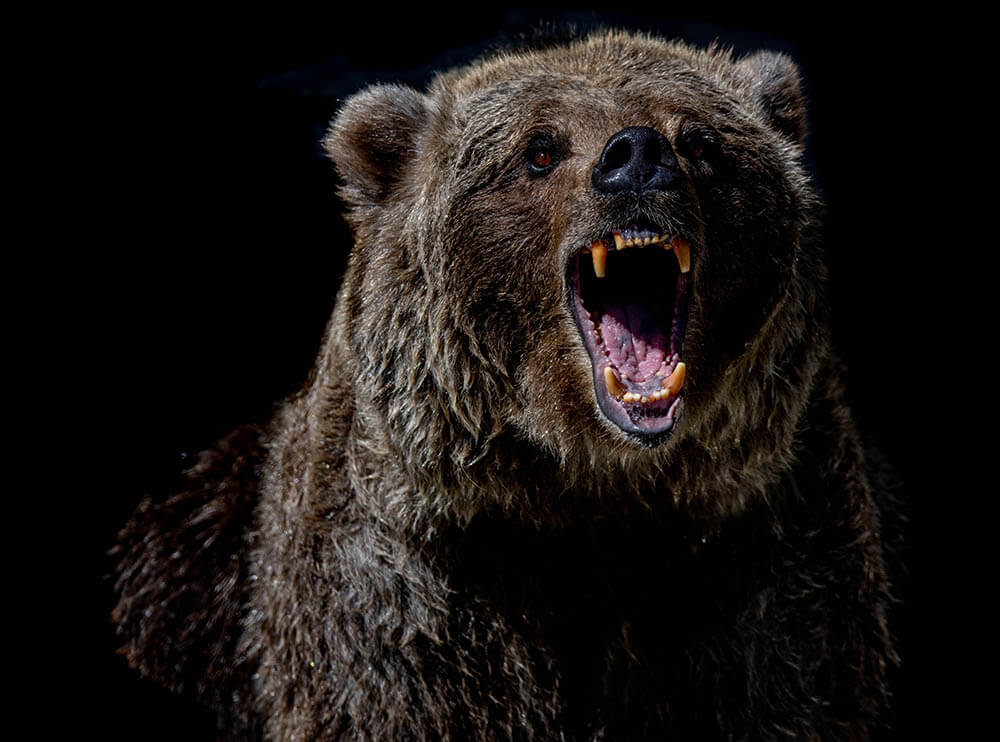
6 Reasons Why Bears Make Bad Pets
Let’s discuss the many reasons why it’s a bad idea to keep bears as pets!
1. Bears are wild animals
Unlike dogs and cats, bears haven’t been domesticated.
Yes, bears are wild animals. Sure, most of them are shy and would rather stay away from a human than have them for lunch. A few of them are even sociable. But they’re still governed by wild instincts that could make them turn on you at the drop of a pin.
Bears can form affectionate friendships with humans. But even the gentlest among them have been known to show aggression toward their caretakers. If your pet bear is having a bad day, the chances of your face getting skewered on a claw skyrocket. And it’s not going to pull its punches just because you say “please, don’t hurt me.”
You can train and care for a bear cub until it’s grown yet still get mauled to death. And there’s nothing you can do to change this fact because, as previously mentioned, bears are wild animals. You’ll need thousands upon thousands of years of domestication to turn a bear from a vicious predator to a cuddly ball of fluff you can trust never to tear your head off.
2. Bears are powerful killing machines
Bears are good at what they do, and sometimes, what they do isn’t nice.
These creatures are ridiculously powerful, with some boasting the strength of around five men, which means they can break you like a twig if they wanted to. They have a bite force ranging from 1,160 to 1,200 pounds per square inch, allowing them to crush bones with ease. They’re also heavyweights, with some individuals topping 1,000 pounds. And don’t forget their sharp claws, which are 1 to 3.5 inches long. Even if a bear has no intentions of disemboweling you, its sheer power and massive size are enough to destroy a human if an accident is to occur during an otherwise harmless activity such as play.
But what if a bear suddenly decides you smell delicious? Pray there’s a car or at least a bicycle nearby because there’s no outrunning a bear. Depending on the species, bears can run up to 35 miles per hour (mph), allowing them to chase down adult moose and deer. Putting things into perspective, the fastest man can run 23 mph, while the fastest woman can run 21 mph. On the other hand, the average running speed is 5.9 mph for men and 5 mph for women.
3. Bears are solitary animals
We successfully domesticated canines in part due to their social nature. As pack animals, dogs have an instinctive need to belong to a family. They also recognize social hierarchy. It was therefore easy for our pets’ ancient ancestors to eventually accept human groups as their pack and humans as their leaders.
In contrast, bears are solitary by nature. They don’t care about hierarchy, so it’s unnatural for them to obey you out of respect for your “higher rank.” You are not their leader, and you’re certainly not a pack member they’re inclined to protect with their life.
While friendships between bears and humans are possible, take note that all it takes is a single mistake for a bear to decide they no longer want you around. After all, bears in their natural habitat murder each other, even their own cubs. What makes you think they’ll give you special treatment?
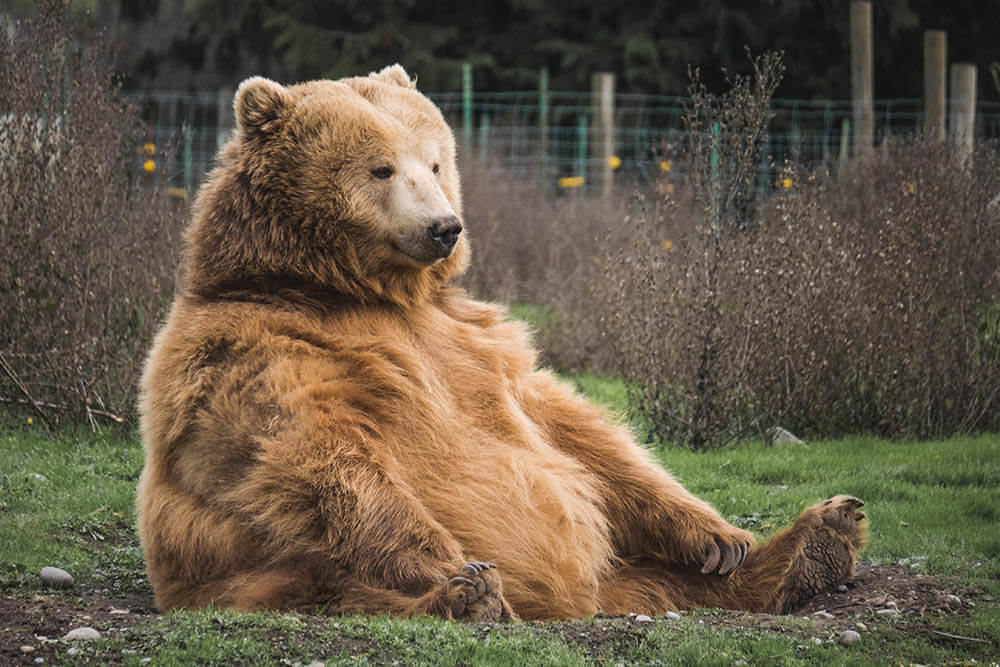
4. Getting a bear is difficult and expensive
Most U.S. states don’t allow the keeping of bears as pets. Even in those places where bear ownership is legal, you’ll need to acquire special licenses and permits before you can be allowed to take a bear home. Not to mention you’ll have to prove that you have the means to care for a bear. Of course, all that paperwork is going to cost you.
As for how much a bear itself costs, a cub is typically between $1,000 and $3,000, while an older bear should be between $1,500 and $2,000. These prices may fluctuate depending on other factors such as the location the bear is sold, the bear’s size, the bear’s species, and whether the animal has been neutered or spayed. In some places, the average price is as high as $5,000.
You can’t walk into a pet store and buy a pet bear, however. You’ll have to ask a private individual or rescue organization if they have any bears they’re willing to part with.
5. Bears have complex, expensive needs
As wild animals, bears enjoy the freedom of being able to roam around in the wild doing whatever they please. They don’t enjoy being cooped up in a house (even if it has a big yard), least of all a cage. And remember: an unhappy bear is more likely to eviscerate you than a happy one.
If you want to keep your pet bear happy, you’ll therefore need an enormous enclosure—preferably one with a large pool as these animals like swimming. Purchasing several acres of land as well as paying for its monthly upkeep will cost more money than most people make in a year.
In addition, you’ll need money to buy equipment for enclosure maintenance, install protective measures, and hire helpers. Your bear will also require toys and other items that will allow it to keep itself entertained and express its wild side safely.
Don’t forget about food. Because bears are behemoths, they have massive appetites, with captive bears eating a minimum of between 20 and 30 pounds of food per day. As they’re also omnivorous, you can’t keep feeding them the same thing over and over again; you’ll have to diversify their meals and ensure they eat various types of meat and vegetation. You’ll therefore be spending an inordinate amount of cash feeding your pet—around $200 to $300 monthly. And you dare not let a bear go hungry—that’s when they’re most dangerous!
Perhaps another option is to live in a cabin in the woods and find a bear to adopt. While this is the cheapest way to “own” a pet bear, it’s also the most hazardous, as you leave yourself vulnerable to attack not just by bears but all types of wild animals and the occasional Jason Voorhees wannabe.
6. Bears require special veterinary care
Don’t even think about bringing a bear to a regular pet clinic or hospital—the veterinarians in such places are trained to treat dogs, cats, and other ordinary pets, not eight-foot-tall monsters capable of dismembering a grown human with a single strike.
If your pet bear ever gets sick, you’ll need to bring it to a specialist. Your best bet is to seek vets who have experience treating bears at zoos or wildlife sanctuaries. Unfortunately, such vets are rare, and any you do find will likely be too preoccupied with their full-time job to help you with your problem.
If you’re serious about keeping a pet bear, you should therefore ensure you live near a bear veterinarian who’s willing to spare time for your pet. Otherwise, you’ll have to travel vast distances to visit a specialist every time your bear needs a medical examination or treatment.
Keep in mind that veterinary care for a bear will also cost you an arm and a leg.
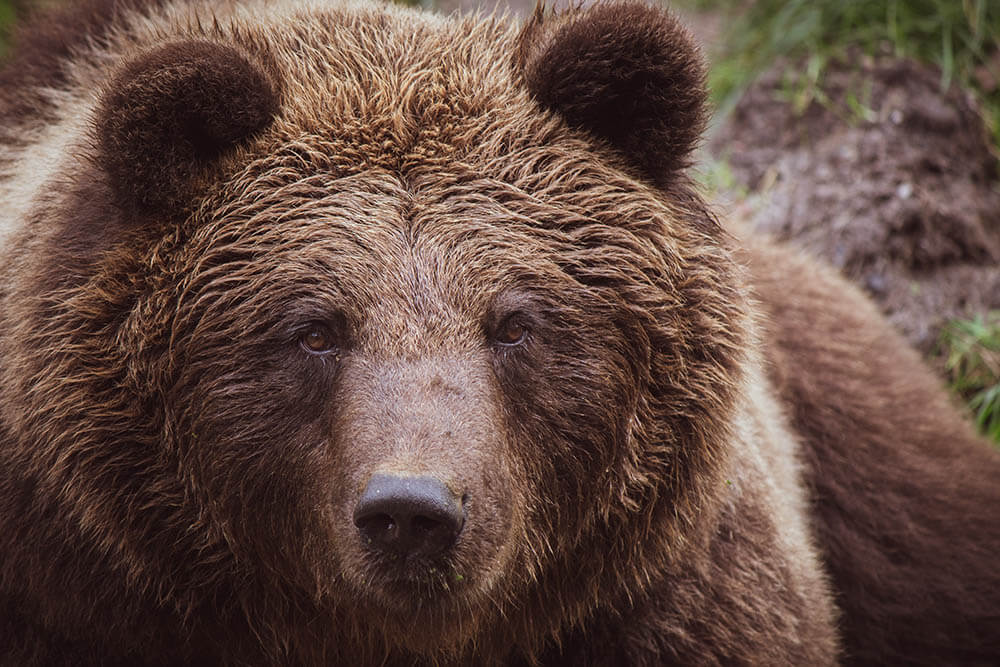
How Do You Survive a Bear Attack?
Let’s say your pet bear realizes it wants to fight you. How do you survive a bear attack? Is survival even possible?
Believe it or not, you can walk away from an angry bear with your guts still intact. We’re not saying it’s easy, though!
To survive a bear attack, do the following things:
1. Use bear pepper spray
Bear pepper spray is your first line of defense against a bear that wants to turn you into paste.
EPA-approved bear pepper spray is designed for the particular purpose of stopping an aggressive bear. Aim for the charging or attacking creature’s face, spray away, then make a hasty retreat while it’s incapacitated.
Keep this pepper spray on your person every time you expect a bear encounter.
If you don’t have pepper spray, you’ll have to employ survival techniques, which brings us to:
2. Use the correct defensive strategies
Bears generally attack when they feel threatened. Successfully defending yourself from such an attack therefore has something to do with adjusting your threat level.
The survival strategy to use will depend on the bear species that’s attacking you.
Brown/grizzly bear:
If a brown or grizzly bear attacks you, don’t run, as it’ll just chase you. Instead, drop to the ground, curl up in a fetal position, and use both hands to cover the back of your neck. Alternatively, you can lie on your stomach while spreading your legs wide and also clasping both hands behind your neck. The bear will try turning you over—these positions will prevent that.
Eventually, the bear will stop seeing you as a threat, lose interest, and go away. Only once the bear is out of sight should you get back up and escape.
If the bear doesn’t let up, your only choice is to fight back with everything you’ve got. Aim for the muzzle, eyes, and face. Make sure to use a weapon, such as a rock or stick, if you can find any nearby. Showing a bear that you’re willing to fight to the death can encourage it to give up.
Black bear:
Don’t flee from a charging or attacking black bear, but don’t play dead, either. Instead, try to find somewhere to hide, such as a building or a car. Don’t try climbing a tree as black bears are great climbers.
If no hiding place is available, stand your ground while making lots of loud noise so that you appear as threatening as possible. This can make the beast back off and leave you alone.
If the bear persists with its attack, the only thing you can do is fight back with as much vigor as you can. Try to find any object you can use as a weapon and focus your strikes on the bear’s snout, eyes, and face. This can dissuade it from slaughtering you.
Polar bear:
Polar bears are far deadlier than other types of bears. They’re less likely to be cowed by your attempts to frighten them away, and they’ll just eat you if you play dead.
The best thing you can do is fight like you’ve never fought before. Go for the face, placing particular focus on the nose and eyes. Know that this is an uphill battle that’ll likely end with you in the bear’s stomach. Good luck, though!
3. Fight back if the bear wants to eat you
A bear that wants you in its belly will stalk you and try to break into your hiding place. It won’t leave you alone if you play dead, and it’ll definitely give chase if you run.
The only course of action is to fight back. Use any available weapons and aim for the usual sensitive spots such as the eyes and nose. Dodge those claws if you can, as a single strike is often enough to kill you. Never let it sink its teeth into you, or it’s game over, man, game over.
Don’t stop fighting until the bear retreats. If you’re still alive by then, pray that you don’t die from excessive blood loss, and remind yourself never to keep a pet bear ever again.
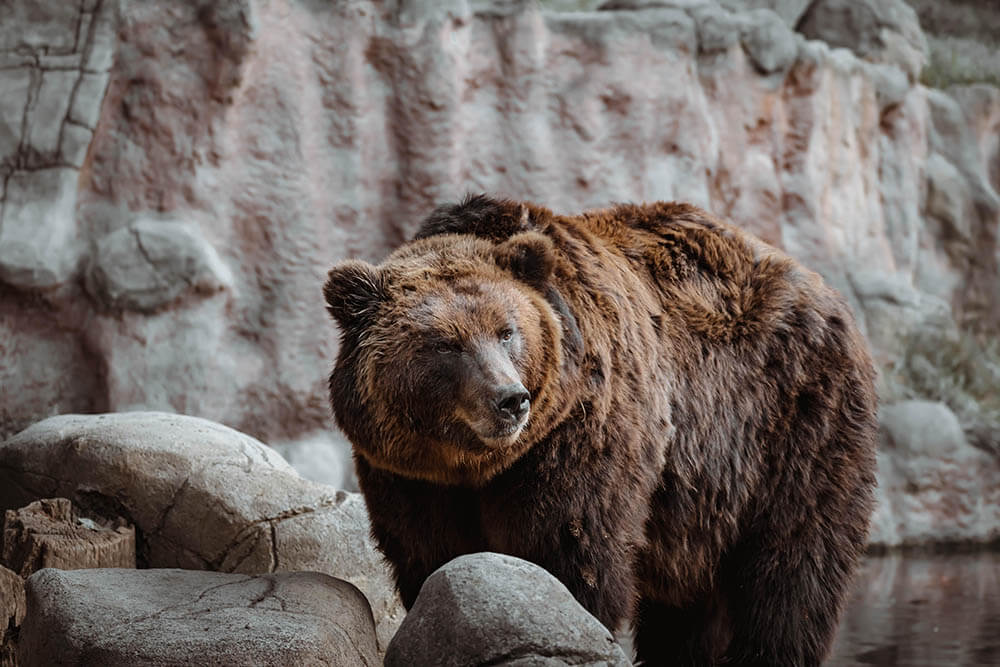
FAQs About Pet Bears
Let’s answer more questions about bears as pets!
Is it legal to own a bear?
It’s legal to own a bear in six U.S. states only, namely Alabama, Nevada, North Carolina, Oklahoma, South Carolina, and Wisconsin.
Are there any benefits to having a pet bear?
Aside from bragging rights that you’re the fur parent of one of the deadliest creatures on the planet? Well, you won’t have to worry about home security anymore. One look at your bear should scare away even the toughest of criminals.
Unfortunately, there are no other real benefits to owning a bear. These animals are far too dangerous, expensive, and challenging to take care of to make keeping one worth all the trouble.
Can you tame a bear?
Taming a bear is possible to some degree. If you raise and train a cub well, it can grow into a docile, loving creature.
It’s important to remember, however, that taming a bear doesn’t domesticate it; it remains wild and thus prone to behaving in ways that can endanger the humans around it.
Can you train a bear?
Yes. You can train a bear the same way you would train a dog: using positive reinforcement. You can even teach a bear to do tricks.
As a trained bear is still a wild animal, however, know that it’s not possible to completely control its behaviors. Even a well-trained bear can turn on its trainer and kill them.
How long do bears live?
In the wild, the average lifespan of a bear is around 25 years, though some can live as long as 30 or even 40 years.
Bears living in captivity live even longer—up to 50 or 60 years. That’s a long time to care for a pet!
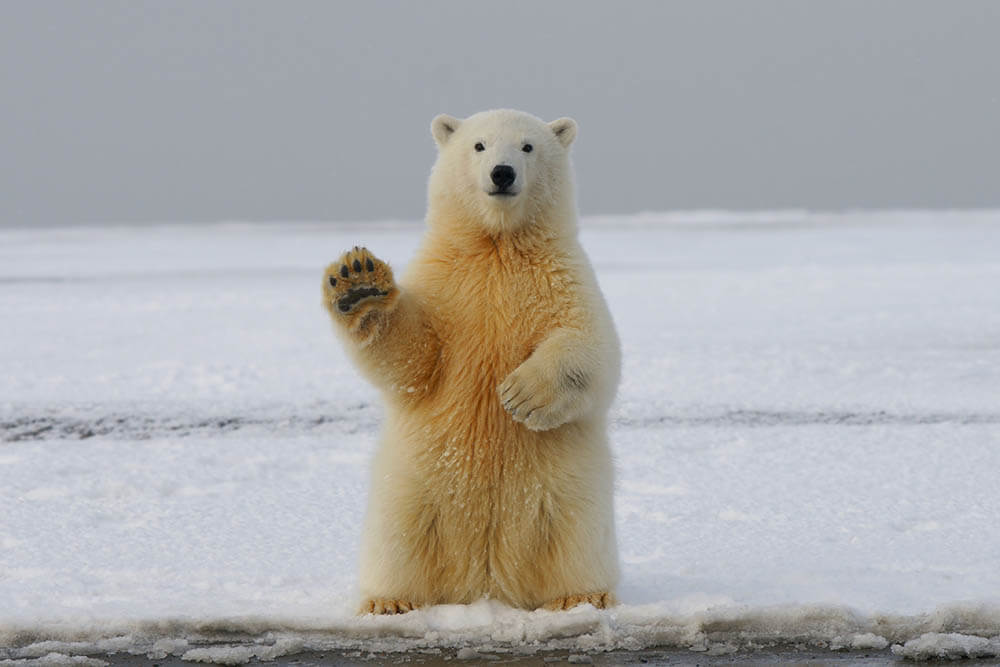
Conclusion
Bears can be gentle and even friendly with humans. Unfortunately, they’re simply too big, strong, and wild to make great pets – not to mention they’re unreasonably expensive to keep around.
Be realistic. Bears are far too dangerous to take home with you. Plus, they deserve to be free in the wild. If you want a big, majestic animal as a companion, you’re better off getting a large dog.
